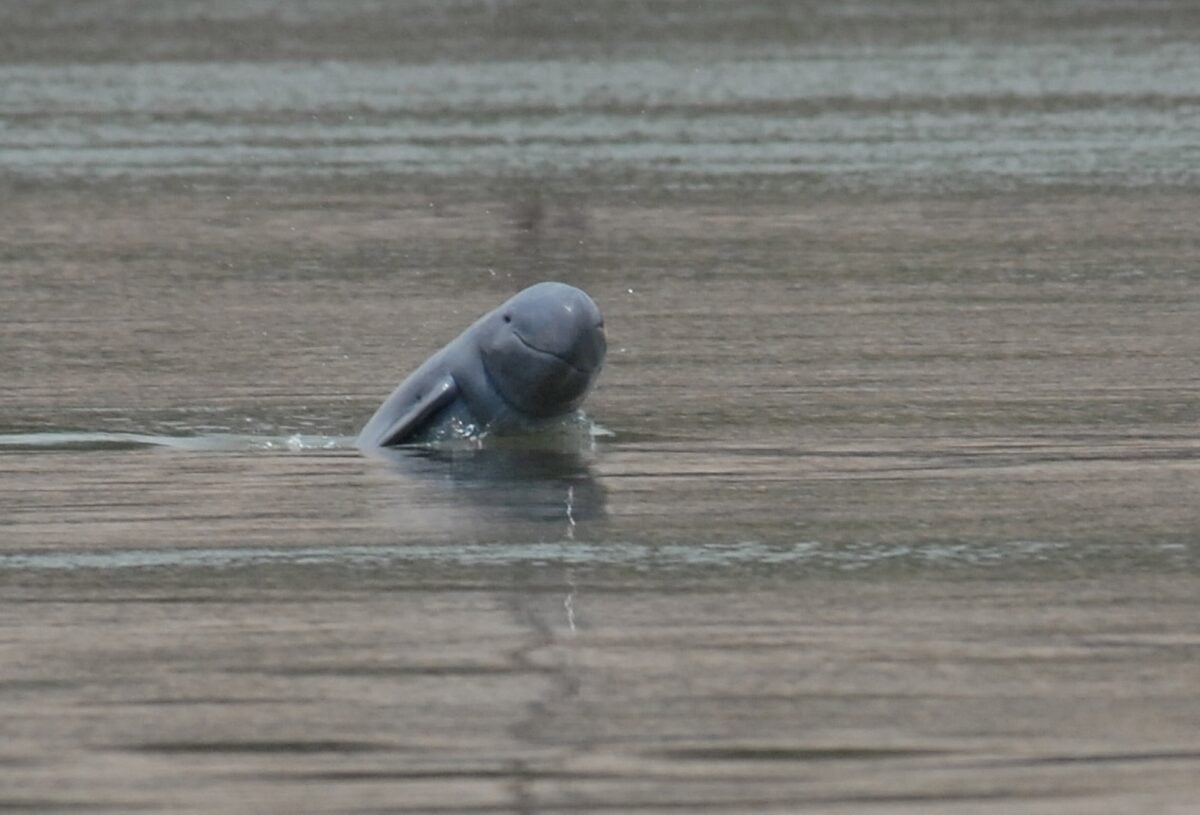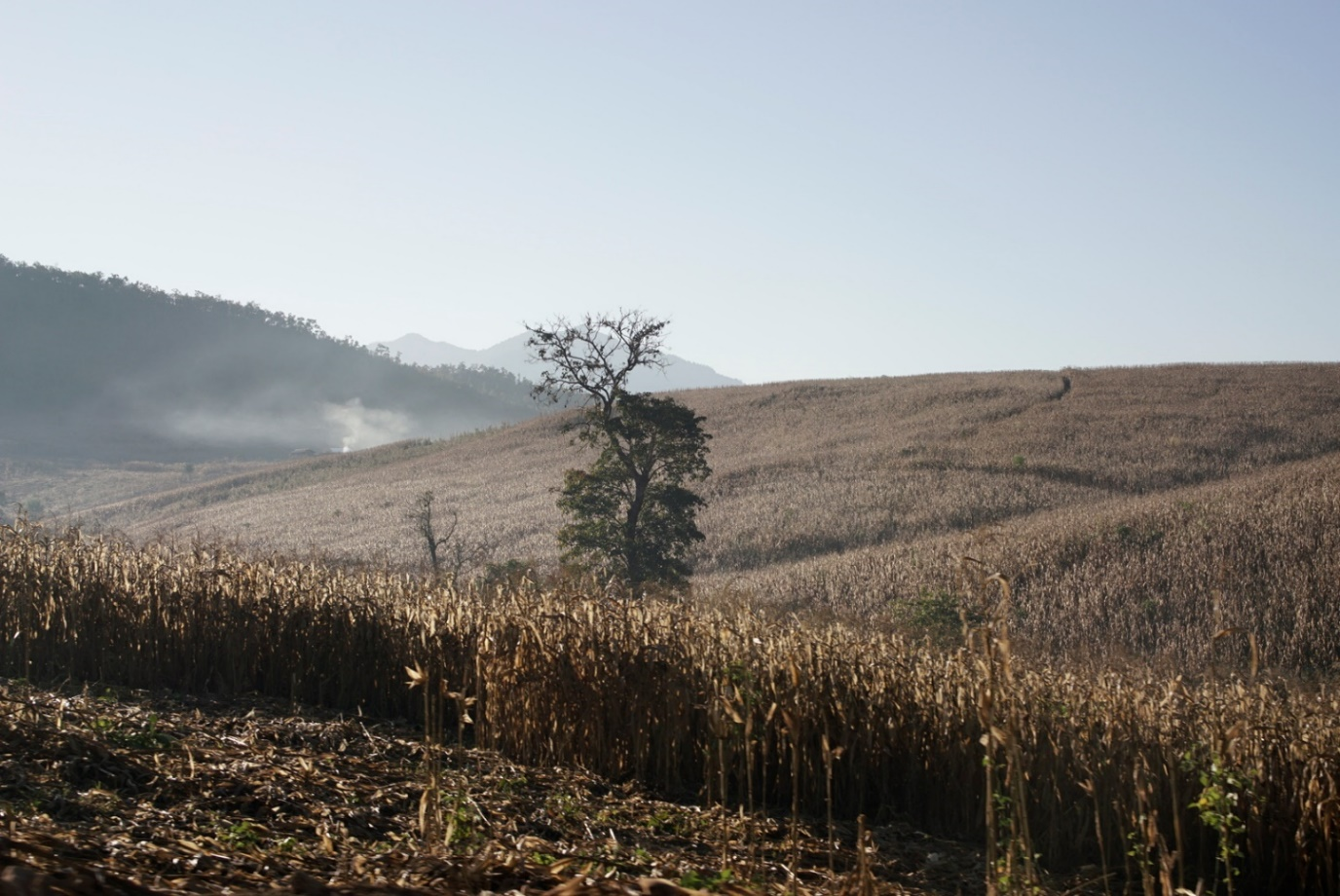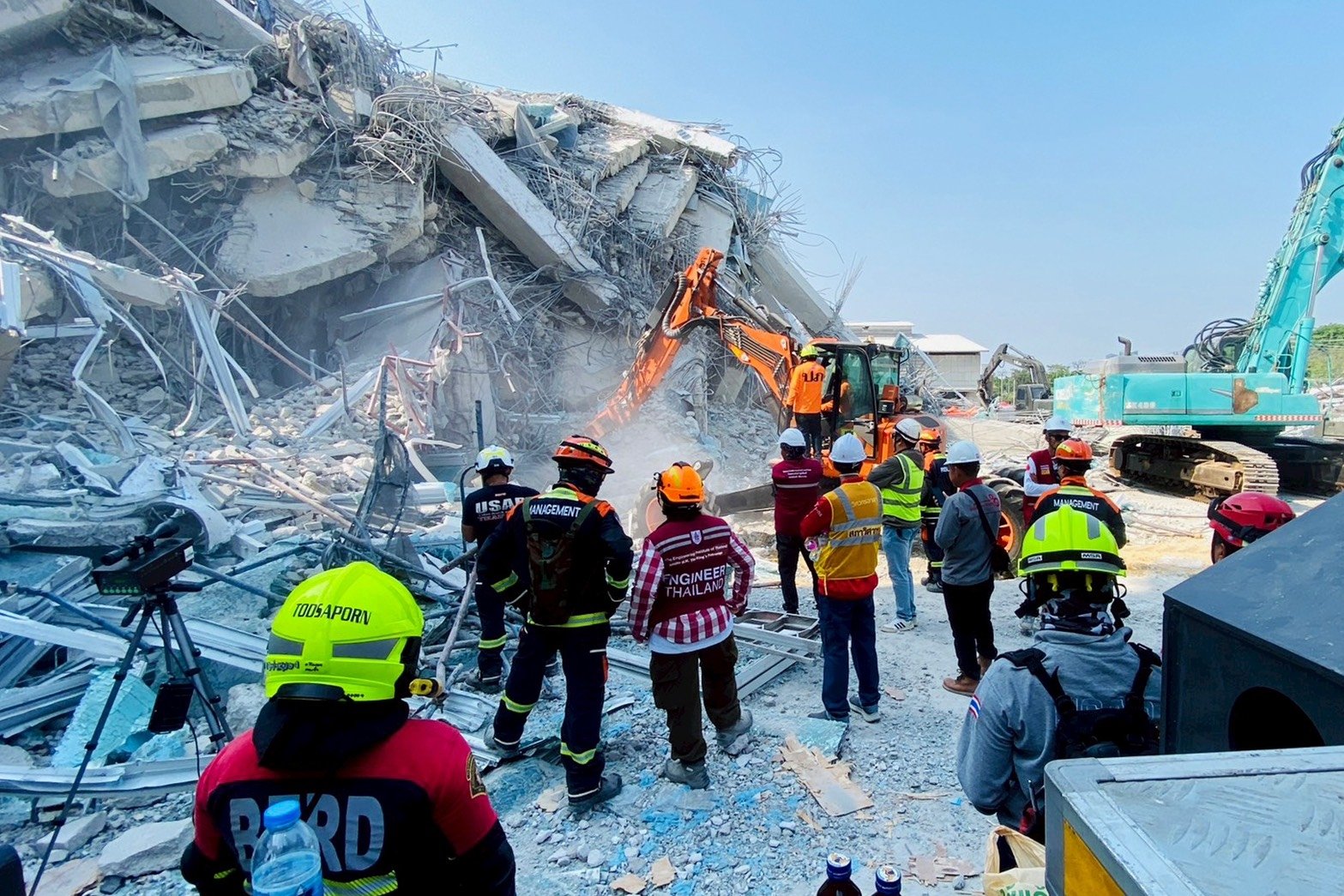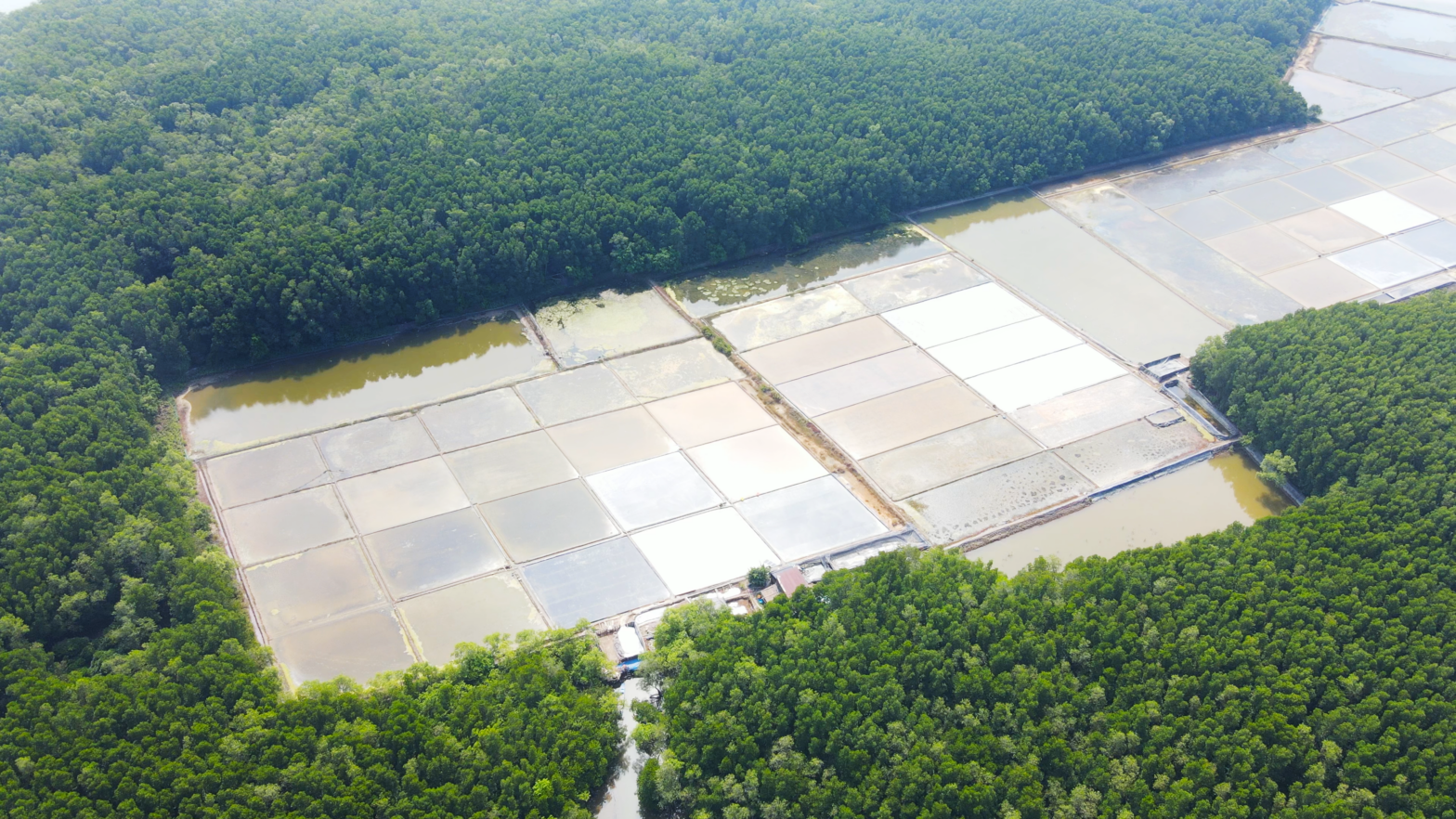Mainland Southeast Asia is home to some of the world’s most biodiverse rivers, including the transboundary Mekong and Myanmar’s Ayeyarwady, which sustain local communities and ecosystems.
These rivers have long been home to the endangered Irrawaddy dolphin, one of six species of freshwater dolphins and porpoises that are deeply connected to local cultures and are vital for tourism and biodiversity.
However, Irrawaddy dolphin populations are declining due to overfishing, habitat destruction and climate change. Fewer than 100 remain in the Mekong River in Cambodia. Myanmar’s dolphin population was estimated at 60 to 70 from 2010 to 2017. Their shrinking numbers signal the deteriorating health of these rivers.
Aware of the challenges facing these dolphins, a team of international conservationists participated in The Mekong Dolphin Swim from March 17–20 in Stung Treng, Cambodia.
They swam 120 kilometers down the Mekong River, where the Irrawaddy dolphins live, to raise awareness and funds for dolphin conservation, collecting more than US$20,000 to support the WWF-Cambodia’s River Guard Programme.
Last month, the Cambodian government established a 22,000-hectare Mekong Irrawaddy Dolphin Management and Conservation Area in Kratie province – a critical step toward protecting one of the world’s most endangered species.

In light of this conservation effort, we spoke with Emily Cunningham, Global Lead for WWF’s River Dolphin Rivers Initiative. She discussed the key threats these species face, ongoing conservation efforts and what the future holds for these endangered mammals – and it’s not all gloom and doom.
Mekong Eye: What is the state of river dolphins globally?
Cunningham: River cetaceans are found in 14 countries across the world. Unfortunately, all six species of freshwater cetaceans are either endangered or critically endangered, meaning they are all facing significant challenges. The river dolphins in Asia are faring particularly poorly, with major threats to all populations in Asia and those in South America.
Mekong Eye: Why should we care about Irrawaddy dolphins?
Cunningham: I like to think of them as ambassadors for their rivers. The health of a dolphin population reflects the health of the river. If river dolphins move away from an area, it usually signals a problem – whether that’s a decline in fish populations, pollution or changes in water levels.
Dolphins are not only important for their ecological role, but also for their cultural and economic significance. For example, it is likely that no Irrawaddy dolphins remain in Laos as a result of changes in river flow and illegal fishing. After the death of the last known individual, called “Lonely Dolphin,” communities that once relied on eco-tourism struggle financially.
Dolphins are deeply connected to local traditions and beliefs. In Cambodia, Buddhist monks actively engage in conservation efforts, recognizing the spiritual value of these animals in Buddhism. Protecting river dolphins isn’t just about saving a species – it’s about preserving an entire way of life for the communities that depend on them.
Mekong Eye: What are the major threats to those in the Mekong region?
Cunningham: Irrawaddy dolphins in the Mekong River in Cambodia face the same threats as all other river dolphin species, whether you’re talking about the pink dolphin in the Amazon or the Irrawaddy dolphin in Cambodia. The main threat to river dolphins is bycatch – when they are accidentally caught in fishing nets. Since river dolphins are mammals and need to breathe air, they drown when trapped.
Mekong Eye: How do you oversee the work that tries to address this problem of bycatch?
Cunningham: A lot of our work across Asia and South America focuses on collaborating with communities to reduce bycatch. We’ve had great success working with communities, whether by designating areas where fishing is reduced or banned or by modifying the nets themselves.
We have also been trialing a technology called pingers – devices that emit high-frequency sounds that dolphins can hear, warning them of nearby nets. When we deploy pingers in the river, we also use an underwater microphone, or hydrophone, to monitor how dolphins react – whether they stay in the area or move away.
We have found that when the pingers are active, dolphins move away from the fishing nets. Then, once the pingers are removed from the water, we can hear through the hydrophone that the dolphins return and behave normally. This confirms that there are no long-term impacts on them.
Pingers have been used very successfully in Pakistan, Indonesia and India, in many cases eliminating bycatch almost entirely. This is also a win for local communities because when dolphins aren’t stealing fish from the nets, the fish catch improves.
Not only do they catch more fish, but often larger fish – the kind dolphins typically go for. So, we hope to scale up our use of pingers. The only challenge is that pingers are quite expensive. The next hurdle is securing funding so we can continue working with fishing communities to support more sustainable practices.
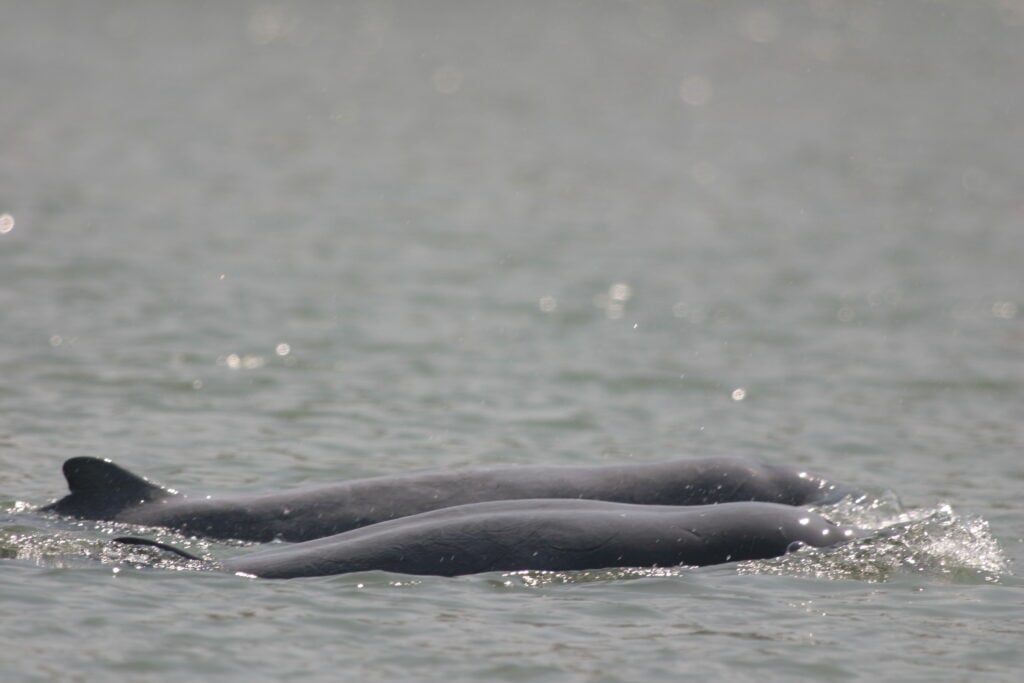
Mekong Eye: In the Mekong context, one of the major threats is infrastructure development, which disrupts the flow of rivers. What are your thoughts on this?
Cunningham: Across all river dolphin habitats worldwide, barrages and dams are a major threat. We want to keep rivers as free-flowing as possible. This challenge is even more significant when you combine the impacts of dams with climate change. Together, they lead to lower water levels during the dry season and higher water levels during the monsoon season, disrupting the natural balance that ecosystems have evolved to adapt to.
One of the biggest challenges, which is difficult to address, is the change in water flow. For Asian river dolphins in particular, we are seeing these changes manifest in different ways. Unlike marine dolphins, which can swim away from storms or pollution events, river dolphins are confined to their river systems and cannot easily escape threats.
During droughts, when water levels drop, dolphins often become trapped in deeper parts of the river. This is especially concerning if a storm or disease outbreak occurs because the dolphins are confined to a smaller space, increasing their vulnerability.
Infrastructure development poses a challenge not just for river dolphins, but for entire river ecosystems and the communities that depend on them. While we recognize the need for clean energy, it is crucial to ensure that such projects are developed in the right locations to minimize harm to rivers and the species that rely on them.
Mekong Eye: Are there any good developments in best practices for eco-tourism?
Cunningham: In Cambodia, our projects emphasize community involvement by supporting community-based ecotourism (CBET) and sustainable livelihoods, reducing reliance on harmful fishing practices. Our teams are working to develop responsible eco-tourism that allows people to see the dolphins without disturbing them while also benefiting local communities.
Boat drivers are known to be respectful since dolphins are tied to their livelihoods, and there have been no reports of accidents. If eco-tourism expands, it must be managed responsibly to avoid harming the animals.
However, the range of river dolphins in Cambodia has significantly shrunk in recent years. Conservation efforts are now focused on the deep pools where the dolphins remain. Previously, their range was much larger, but now it has become much smaller, requiring more targeted protection efforts.
Mekong Eye: We can’t overlook the role of local researchers. How do you see development in the Mekong region?
Cunningham: Cambodia is a great example where research and monitoring is locally led, with international partners providing support rather than taking the lead.
A key focus of our initiative is capacity building within these teams. We aim to ensure that researchers in Cambodia, Indonesia and Myanmar – who study the three populations of Irrawaddy dolphins – learn from each other and share experiences. We are organizing a workshop in partnership with the Ministry of Agriculture, Forestry and Fisheries within the government of Cambodia, bringing together dolphin scientists and conservationists to review conservation approaches and strengthen regional collaboration.

Mekong Eye: Beyond specific projects already being implemented, are there any significant advancements in efforts to protect river dolphins?
Cunningham: For river dolphins, a major milestone was achieved in 2023 with the Global Declaration for River Dolphins. It was signed in Colombia by 10 countries, including Cambodia, and having their support was wonderful. This declaration commits governments to a set of evidence-based pledges aimed at safeguarding river dolphins.
Governments are now beginning to implement these pledges, which is very exciting. There has been the development of a conservation management plan through the International Whaling Commission, which is specifically for the Irrawaddy dolphins. We’re hopeful that that will mean not only that the countries are making progress individually, but that they’re working together.
WWF is now applying lessons learned from South America to this new conservation management plan.
Mekong Eye: Funding is often a major challenge for conservation efforts. Are there any initiatives to address the financial gap for river dolphin conservation?
Cunningham: We’re developing the Resilient Rivers Fund that targets to source US$1 billion of blended finance from the private and public sectors for river dolphin conservation in Asia. We are developing the fund now, and we hope it will run until at least 2030, though it may extend further depending on progress.
This fund will support governments in initiating their own conservation efforts to meet the pledges made under the Global Declaration for River Dolphins, together with local communities. We’re also launching the Global Coalition for River Dolphin Conservation, which includes stakeholders who care about river dolphins – whether they are local communities, researchers or individuals from around the world, even those from countries without river dolphins.
Mekong Eye: What do you expect to see by 2030 in river dolphin protection?
Cunningham: What I would hope for by 2030 is that all river dolphin populations have at least stabilized, so there’s no more decline, and that at least for some of them, they will be growing.
It can sound really doom and gloom for river dolphins, but there are two really good success stories. The Indus River dolphin, in Pakistan, has doubled the population over the past few decades as a result of great work by the government, communities and WWF Pakistan.
In China, the Yangtze finless porpoise, which is the only porpoise found in rivers in the whole world, has increased by 20% in the last few years as well.
We know that with the right actions, we can recover river dolphin populations. But it requires us to work together, not just with governments, but with communities as well.


